Mesotherapy in New York City
Search and Compare the Best Clinics and Doctors at the Lowest Prices for Mesotherapy in New York City
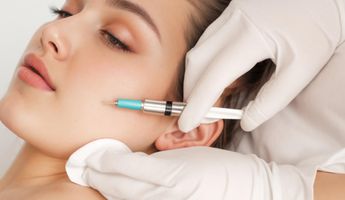
Find the best clinics for Mesotherapy in New York City
No pricing info available
Ukraine offers the best prices Worldwide
Price: $ 20
From 114 verified reviews
Jesse Lee D, 22 September 2020
Center Aesthetic is not only gorgeous and CLEAN, but everyone is so friendly and they do the best work in town. I can not recommend them enough. Nurse Lynn knows how to rejuvenate the face without ever looking “done”
- Home
- United States
- New York City
Compare Before & After Photos of _procedure_photos.phpMesotherapy
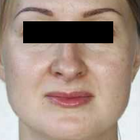
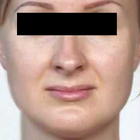
Front view

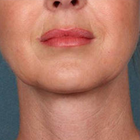
Front view
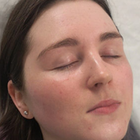
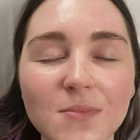
Front view

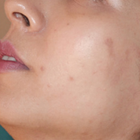
Half-side view

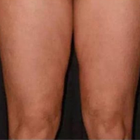
Front view
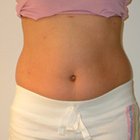
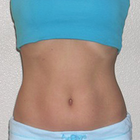
Front view
WHY US?
At Medijump, we're making medical easy. You can search, compare, discuss, and book your medical all in one place. We open the door to the best medical providers worldwide, saving you time and energy along the way, and it's all for FREE, no hidden fees, and no price markups guaranteed. So what are you waiting for?

Free

Best Price

Widest Selection

Risk-Free
What you need to know about Mesotherapy in New York City
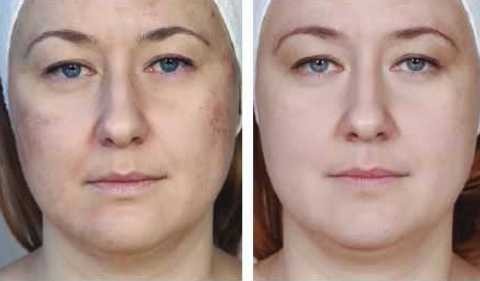
Mesotherapy is a nonsurgical technique that uses micro-injections of vitamins, hormones, enzymes, and plant extracts. Its goal is to rejuvenate and tighten the skin. It is also used to reduce cellulite, lighten pigmented skin, fade wrinkles and line, treat alopecia and encourage hair growth, recontour the body, as well as to remove fat in areas such as the thighs, stomach, buttocks, legs, hips, face, and arms.
Very fine needles are used to deliver a series of injections into the middle layer of the skin. These injections are believed to correct underlying issues, such as inflammation and poor circulation, which cause skin damage.
Before mesotherapy, you may have problems like stubborn fat in certain areas of the body, wrinkles and fine lines in the face, pigmented skin, etc. After the procedure, you’re dull and tired-looking skin will be improved, superficial wrinkles will fade, and excess fat will be reduced. If you undergo the procedure to treat alopecia, you can also expect the procedure to promote hair growth.
What does a Mesotherapy Procedure Involve?
While mesotherapy is nonsurgical and not painful, it can be slightly uncomfortable. Therefore, you may have anesthetic cream applied to your skin to numb the affected area.
Using a special short needle, you will get a series of injections. The injections can be carried out on the face, neck, scalp, chest, hands, and other areas of the body that may have problems you wish to address. There is not a standard formula for the substances injected. The practitioner may use a combination of different substances, including vitamins and minerals, enzymes (such as hyaluronidase and collagenase), herbal extracts, hormones (such as thyroxin and calcitonin), as well as prescription medicines (such as antibiotics and vasodilators). The substances used depends on what you want to treat. For instance, the treatment for cellulite and body fat reduction may use lecithin and isoproterenol.
Each injection can be given at different depths into your skin, ranging between 1 and 4 millimeters, depending on the condition you want to treat. The practitioner may flick their wrist at a rapid pace while injecting, or place the needle into your skin at an angle.
How Long Should I Stay in New York City for a Mesotherapy Procedure?
Mesotherapy is an outpatient procedure, so you can leave the hospital on the same day. You should be able to leave New York City right away, but it is recommended to wait at least a day before you travel home because you need to wait for the substances to settle down. However, since you may need a series of treatment to get the desired results, you should expect to return to the clinic or hospital between 3 to 15 times, with 7 to 14 days intervals. Therefore, the length of stay depends on how many sessions you will need until you achieve the result you wish for.
What's the Recovery Time for Mesotherapy Procedures in New York City?
Mesotherapy has minimal downtime. You may experience a little bruising and swelling after the procedure, but they will subside within 24 hours. Some people are able to return to work and your normal activities on the same day, while others may need to take a day off due to pain and swelling.
What sort of Aftercare is Required for Mesotherapy Procedures in New York City?
No special aftercare is needed, but the practitioner may give you instructions to follow, which may include what you should do to avoid complications and to reduce swelling and bruising. You can have maintenance treatments 1 – 2 times a year.
To maintain the results, particularly if you have mesotherapy to reduce signs of aging and eliminate excess fat, make sure you exercise regularly, follow a well-balanced diet plan, and limit your alcohol intake.
What's the Success Rate of Mesotherapy Procedures in New York City?
While there is proof showing that there can be some improvement after mesotherapy, more studies and research are needed to verify the mechanism, safety, and effectiveness of the procedure. Therefore, you should always choose a licensed practitioner with proven track records and experience if you do want to try the procedure.
According to those who practice mesotherapy, the risks tend to be minimal if you go to an experienced and trained practitioner. The side effects and risks of mesotherapy may include pain, nausea, sensitivity, bumps, swelling, bruising, itching, dark patches of the skin, redness, rash, scars, and infection.
Are there Alternatives to Mesotherapy Procedures in New York City?
The alternative to mesotherapy depends on the condition you want to treat, which may include:
- Injection lipolysis – mesotherapy and injection lipolysis are often thought to be the same procedure, but they are actually two different procedures. Injection lipolysis involves the injection of deoxycholate and phosphatidylcholine into the fat layer under the skin to break up fat.
- Liposuction – is one of the most popular cosmetic treatments to remove excess fat. It uses a suction technique to eliminate fat from specific areas of the body.
- Botox and dermal fillers – both Botox and dermal fillers are nonsurgical treatments to rejuvenate the skin. Botox works by blocking nerve contraction to relax wrinkles, while dermal fillers can improve skin contouring.
Whilst the information presented here has been accurately sourced and verified by a medical professional for its accuracy, it is still advised to consult with your doctor before pursuing a medical treatment at one of the listed medical providers
No Time?
Tell us what you're looking for and we'll reachout to the top clinics all at once
Enquire Now

Popular Procedures in New York City
Prices Start From $85

Prices Start From $167

Prices Start From $120

Prices Start From $931

Prices Start From $76

Prices Start From $5

Prices Start From $236

Recommended Medical Centers in New York City for Mesotherapy

- Interpreter services
- Translation service
- Religious facilities
- Medical records transfer
- Medical travel insurance
- Health insurance coordination
- TV in the room
- Safe in the room
- Phone in the room
- Private rooms for patients available

- Interpreter services
- Translation service
- Religious facilities
- Medical records transfer
- Medical travel insurance
- Health insurance coordination
- TV in the room
- Safe in the room
- Phone in the room
- Private rooms for patients available

- Interpreter services
- Translation service
- Religious facilities
- Medical records transfer
- Medical travel insurance
- Health insurance coordination
- TV in the room
- Safe in the room
- Phone in the room
- Private rooms for patients available

- Interpreter services
- Translation service
- Religious facilities
- Medical records transfer
- Medical travel insurance
- Health insurance coordination
- TV in the room
- Safe in the room
- Phone in the room
- Private rooms for patients available

- Interpreter services
- Translation service
- Religious facilities
- Medical records transfer
- Medical travel insurance
- Health insurance coordination
- TV in the room
- Safe in the room
- Phone in the room
- Private rooms for patients available

- Interpreter services
- Translation service
- Religious facilities
- Medical records transfer
- Medical travel insurance
- Health insurance coordination
- TV in the room
- Safe in the room
- Phone in the room
- Private rooms for patients available

- Interpreter services
- Translation service
- Religious facilities
- Medical records transfer
- Medical travel insurance
- Health insurance coordination
- TV in the room
- Safe in the room
- Phone in the room
- Private rooms for patients available

- Interpreter services
- Translation service
- Religious facilities
- Medical records transfer
- Medical travel insurance
- Health insurance coordination
- TV in the room
- Safe in the room
- Phone in the room
- Private rooms for patients available

- Interpreter services
- Translation service
- Religious facilities
- Medical records transfer
- Medical travel insurance
- Health insurance coordination
- TV in the room
- Safe in the room
- Phone in the room
- Private rooms for patients available
Mesotherapy in and around New York City
About New York
New York City, or simply New York (NY), is the most populous city in the United States with an estimated population of over 8 million. The city is labeled as the cultural, financial, and media capital of the world. It is an important center of international diplomacy since it houses the headquarters of the United Nations. The city has been attracting tourists from all around the globe for its architectural beauty, dining spots, and arts. Fueled by its global popularity and superior healthcare, the city also welcomes patients from many other countries to undergo cosmetic surgeries and complex or rare procedures that are not available in the patient’s home country. The medical professionals are highly qualified, skilled, and experienced. The medical costs might not be the cheapest, but patients will get the best treatment in the world.
Popular Areas in New York
New York offers its visitors a myriad of attractions to see and things to do. Tourists can find world-famous sites in almost every corner. The following are the most popular places in the city.
- Statue of Liberty is a symbol of freedom and democracy. It was a gift from the French people to the people of the United States as a monument of international friendship during the American Revolution. This famous statue was designed by French sculptor Frédéric Auguste Bartholdi, and the metal framework was built by Gustave Eiffel. Tourists can access the pedestal and the crown. Although the climb to the top is strenuous, the view from Lady Liberty’s crown is breathtaking, making it one of the most rewarding experiences of your trip to NYC. To get to the statue, you need to take a ferry from Battery Park City or New Jersey. There is only one official ferry company that is allowed to take you to the islands, Statue Cruises.
- Staten Island Ferry offers a stunning landscape of New York City and the Statue of Liberty. The ferry runs frequently and is free. Tourists can enjoy the refreshing breeze while admiring Governors Island, the Brooklyn Bridge, lower Manhattan and Wall Street’s skyscrapers, Ellis Island, the Statue of Liberty, and the Verrazano-Narrows Bridge.
- Empire State Building is perhaps the most iconic symbol of New York City. This magnificent landmark should not be missed by any visitors. The building was opened during the Great Depression in 1931 and tourists can see its Art Deco style in the architecture. The view from its 86th and 102nd floors is spectacular, especially around sunset time.
- Central Park is 843 acres of open space and is a good place to escape from the concrete jungle of New York City. The park was designed by Frederick Law Olmsted and Calvert Vaux, and it was the first major landscaped public park in the United States. Tourists can wander around the park, enjoy a picnic, visit a memorial to John Lennon, or interact with animals in the Zoo.
Weather and Climate in New York
New York City has four seasons, each with its own perks, which makes the city a year-round destination.
- Spring starts in March and ends in April. The city enjoys a pleasant temperature during this season. It is one of the most beautiful times to visit since the city is filled with Cherry Blossoms and hosts a number of festivals. However, expect to experience seasonal storms.
- Summer is from June to August. The temperatures are mostly warm, with an average between 25 °C to 30 °C. The city is usually crowded and busy during this season, but tourists can enjoy several free summer concerts.
- Autumn is a great time to visit New York City, which lasts from September to November. The summer heat will be replaced with a cooler temperature, and the city is overflowing with red and orange leaves.
- Winter in the city can be freezing and sometimes snowy. The season starts in December and ends in February. The temperatures can drop as low as -25 °C. If you plan to visit during winter, make sure to dress properly.
Getting Around in New York
The primary international airport in New York City is the John F. Kennedy International Airport. More than ninety airlines operate from this airport, including several budget airlines such as JetBlue. Getting around the city is fairly easy and inexpensive, especially by public transportation. The city has 27 subway lines stopping at 472 stations and more than 5,000 buses. To ride the subway, you will need to purchase a MetroCard that cost $1. The fares are $2.75 per trip and you can buy a one week unlimited MetroCard for $33 or an unlimited monthly MetroCard for $127.
The bus will take you to many places including the east or west portions of Manhattan. The bus fares are $2.75 per trip and the buses only accept MetroCard or exact fare in coins. If you do not want the hassle to figure out the public transportation system, the iconic yellow taxis are widely available. You can flag them down directly from the streets. The taxis are green in Brooklyn and Uber and Lyft are also available.
Tourists Visas in New York
Citizens of Canada, Marshall Islands, Micronesia, Palau, and Bermuda are given visa exemption access. Holders of passports issued by 38 countries including Australia, Singapore, and the United Kingdom are selected for the Visa Waiver Program. Nationals from countries that are not listed in the visa exemption and visa waiver program need to apply for a visa. All visitors may stay for a maximum of 90 days. It is advisable to learn more about the visa policy at your nearest United States Embassy.
Additional Information
- Local Currency: US dollar ($) is the official currency. Please check XE.com for the current exchange rate to your local currency.
- Money & Payments: ATMs can be found everywhere, and credit cards are accepted at most hotels, restaurants, and shops. Tipping is not optional. For restaurant servers and bartenders, 15% - 20% of the bill is acceptable.
- Local Language: The main language in New York City is English. However, there are over 800 languages spoken in the city, such as Spanish and Chinese.
- Local Culture and Religion: Christianity is the major religion in New York City, followed by Judaism, Islam, Buddha, and Hindu.
- Public Holidays: New York City celebrates various holidays, including New Year, Martin Luther King Jr Day, Independence Day, Thanksgiving Day, and Christmas Day.
Popular Searches
- Plastic Surgery in Thailand
- Dental Implants in Thailand
- Hair Transplant in Thailand
- Breast Augmentation Thailand
- Gastric Sleeve in Thailand
- Gender Reassignment Surgery in Thailand
- Laser Hair Removal in Bangkok
- Botox in Bangkok
- Dermatology in Bangkok
- Breast Augmentation in Bangkok
- Coolsculpting in Bangkok
- Veneers in Turkey
- Hair Transplant in Turkey
- Rhinoplasty in Turkey
- Stem Cell Therapy in Mexico
- Rhinoplasty in Mexico
- Liposuction in Mexico
- Coolsculpting in Tijuana
- Rhinoplasty in Korea
- Scar Removal in Korea
- Gastric Sleeve in Turkey
- Bone Marrow Transplant in India
- Invisalign in Malaysia
- Plastic Surgery in the Dominican Republic
- Tummy Tuck in the Dominican Republic
- Plastic and Cosmetic Surgery in Poland
- Rhinoplasty in Poland
- Hair Implant in Poland
- Dental Implants in Poland
- IVF in Turkey
